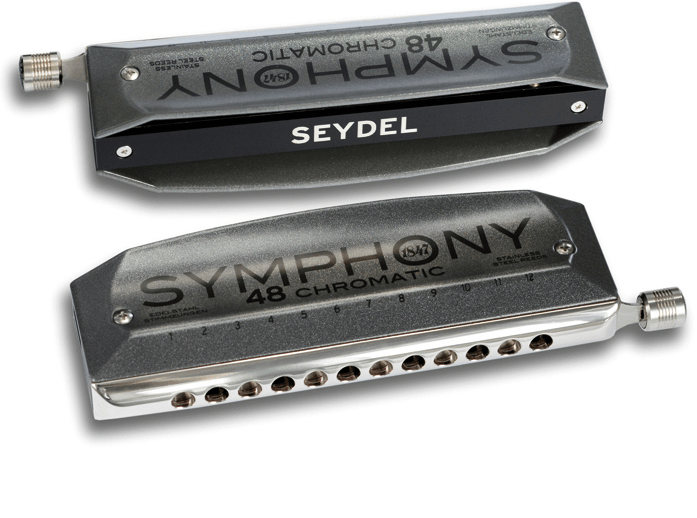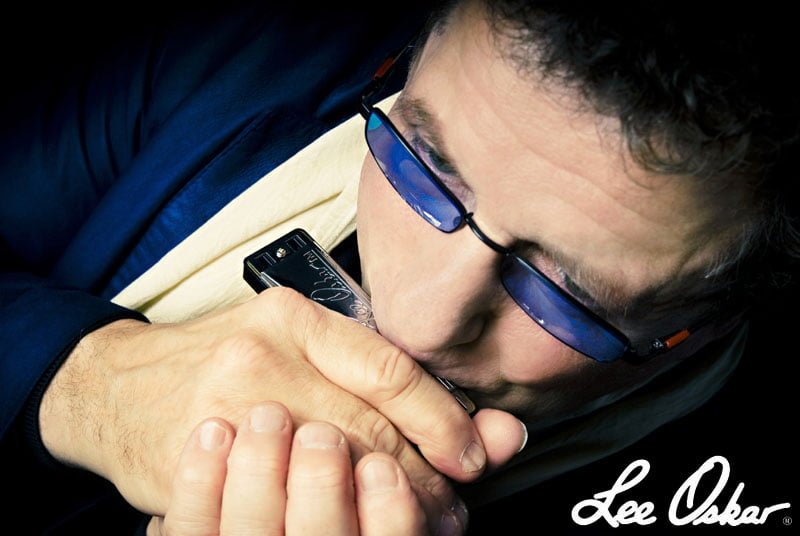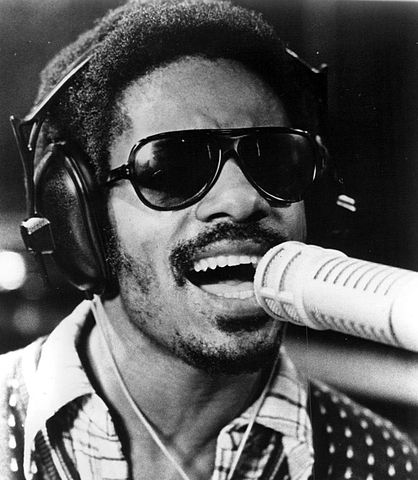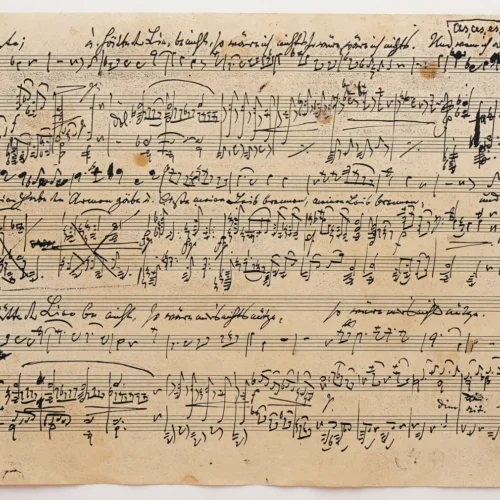Chromatic Harmonicas
There’s a wide range of chromatic harmonicas on the market right now, and it can be bewildering, particularly to newcomers, when, on paper at least, the differences between sub-£100 harps and those costing over £1000 seem to be slight. Help is at hand, though – in this post we’ll give you an impartial guide to the best chromatic harmonicas, and explain the differences between models how this influences how they play and sound.
Let’s start by examining the different price points.
Sub-£100 Chromatics
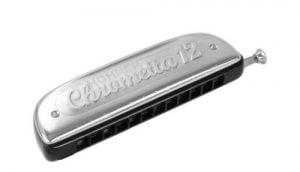
The least expensive models in this price range tend to be slideless models, such as the Tombo S50, or Chinese-made instruments produced by companies like Easttop and Swan (sometimes on behalf of more famous companies, such as Hohner).
Slideless chromatics are quite different from traditional chromatics, and work by having two sets of holes situated at angles to each other, which activate their respective reed plates. This enables full chromaticism to be achieved, but is more limiting in the techniques that can be used and sounds that can be produced. Fans of Steve Wonder-esque chromatic runs will need to look elsewhere.
The least expensive chromatics in this price range tend to be fairly ‘leaky’. That is to say, they take a lot of breath to achieve consistent sounding of notes. This is generally due to their lack of valves (thin pieces of material on the reeds that limit air loss) but can also be a consequence of poor tolerances in the manufacturing process. The Easttop Forerunner is a typical example of this level of harmonica; although initially it seems similar in appearance and construction to the brand’s higher end chromatics, the lack of valves and lower quality reed plates make it significantly harder to play.
Our general advice with chromatics is to spend a little more than the entry level, sub-£100 price point, as the improvements in quality, playability and tone are more than worth the extra cost.
£100 – £250 Chromatics
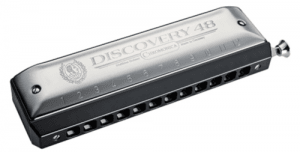
At the lower end of this price point the first German and Japanese made chromatics start to appear, and this is where we recommend most players should look when buying a chromatic harmonica. Although £100+ may seem a considerable sum to those more used to the low prices of diatonic harps, chromatics are much more complex and versatile instruments than their 10 hole counterparts, and are still remarkably inexpensive when compared with guitars, for example.
Most harps within this price range will have 12 holes, although at the mid to upper end some 16 hole models start to creep in, such as the Hohner Chromonica 64 and the Suzuki SCX-64.
As a starter 12 hole chromatic, it’s hard to beat the Hohner Discovery 48, which is a German-made harmonica with an ABS comb and the same reed plates as the more expensive Xpression harp. It’s robust, has excellent tone and playability and its comb is completely swell resistant.
Moving towards the middle of this price point, there is a wealth of great harmonicas available. Our recommendations would be the Suzuki SCX-48, the Seydel Deluxe Steel and the Hohner CX12, which are all Japanese or German made harmonicas with excellent build quality, tone and playability. Importantly, a wide range of spare parts is available for all of these harps, so they are fully serviceable and should last a lifetime if correctly maintained.
£250 – £500 Chromatics

At this price point, 16 hole harmonicas become more common, and unique features begin to appear to differentiate these more expensive harps from their cheaper counterparts. Hohner’s ACE 48, for example, has removable inserts that enable the player to tune the tonal colour and weight distribution of the harp, and Seydel’s Symphony 48 features a magnetic slider system and polished stainless steel reeds.
Our recommendations within this price range include the Hohner Super 64 and Super 64X (as used by Stevie Wonder), the Seydel Symphony 48 and Hohner’s ACE 48.
£500 – £1000 Chromatics
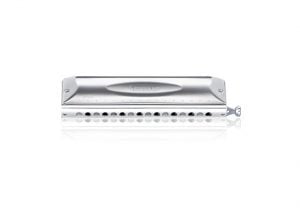
Although there is an element of diminishing returns at this price point, it does open up the range of harps available to include some of the finest harmonicas on the market. High end 16 hole harmonicas, such as the Seydel Symphony 64 and Suzuki Sirius 64 feature in this category, as do instruments, such as the Suzuki Gregoire Maret G48W, which make innovative use of materials such as brass and walnut to optimise tonal quality.
Our recommendations in this price category are the Seydel Symphony 64, Hohner Meisterklasse and Suzuki Sirius.
£1000+ Chromatics
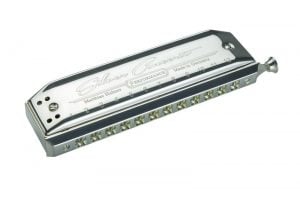
Whilst this may seem an extravagant amount of money to spend on a harmonica, viewed in the context of other instruments, such as electric guitars, where £1000 is roughly the point at which quality, US-made guitars become available, it is not as profligate a figure as might initially be thought.
Harmonicas in this price bracket range from high end production harps, such as the Hohner Amadeus, through to fully custom chromatics made without compromise from the most expensive materials, such as the Polle Concert Chromatic and Hohner Silver Concerto. As with many professional level classical instruments, silver is the choice of metal for the bodies of the most expensive chromatics, having been championed as a material by Tommy Reilly in the late 1960s. This provides the absolute pinnacle of tonal quality, but also is a major contributor to the high price of these instruments.
How Much Should I Spend on a Chromatic Harmonica?
In simple terms, we recommend the following:
Beginners and those on a tight budget – £120 – £200
Experienced players and those needing a quality 16 hole chromatic – £250 – £650
Beyond this price point you will be experiencing diminishing returns, so the differences between a £650 chromatic and a £1000 one will be far less than the difference between a £50 chromatic and a £150 one. As ever, though, a professional level instrument can be a joy in ways that can’t be easily justified in purely financial terms, so if you’re really sold on the idea of owning, say, a Silver Concerto, don’t let this put you off!

